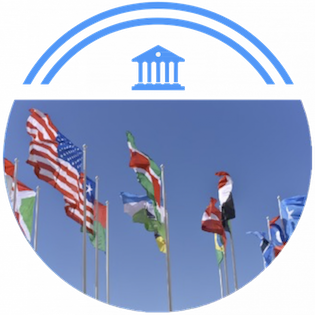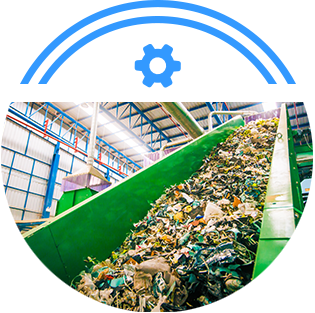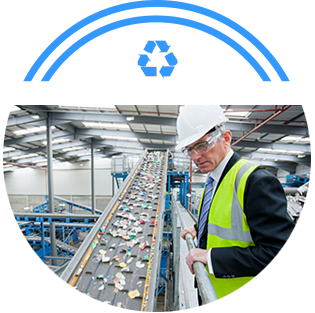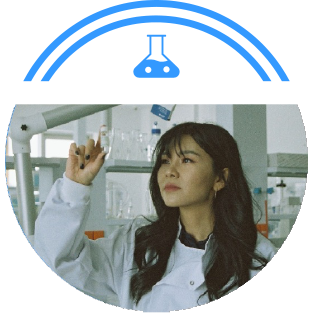Our Positions
No single organization or country can tackle this challenge alone
Collaboration between the public, private sectors, and civil society is essential for effective solutions to prevent pollution and scale up a circular economy for plastics. We agree with the importance of sustainable consumption and production and creating well-designed plastic products that can minimize waste. We also agree that creating universal access to collection and environmentally sound waste management is a key step toward circularity.
By fostering cooperation across civil society, public and private sectors, we can develop tailored, sustainable solutions that address the unique challenges faced by different communities.
Eliminating plastic pollution is not achievable until we close this gap and create a circular economy in which used plastics are no longer perceived as waste. Developing countries, in particular, require targeted capacity-building and social inclusion strategies that engage all three sectors in the transition to a circular economy.

Key Elements of a Global Agreement
To help end plastic pollution, while enabling society to continue to benefit from plastics, the agreement should be based on reliable and objective scientific data, incentivize action by governments, businesses and civil society and support the developing world through financing and capacity building efforts that level the playing field. To drive meaningful change and serve as a catalyst for investment and support the development of a circular economy for plastics, we’re championing a global agreement with the following key elements and actions:
1.
DEVELOP NATIONAL ACTION PLANS
Countries face different challenges and require different solutions. An enabling agreement should consider an individual country’s needs and responsibilities.
That is why national action plans, tailored to each country’s unique circumstances and capabilities, should form the foundation of the agreement. The plastics agreement should develop common elements and reporting requirements that are consistent across national action plans to keep countries accountable for tracking progress.
2.
CREATE THE RIGHT DEMAND SIGNALS
To further accelerate a global transition to plastics’ circularity, we need a policy and regulatory ecosystem that enables access to waste management solutions and encourages continued investment in recycling innovations and projects by the private sector.
The plastics agreement can create the right demand signals to the private sector to spur investment in collection, sortation and recycling. Such demand signals could include recycling rate targets and/or requirements for packaging to contain recycled plastic in them. These targets should be developed at the country level and step up over time.
3.
IDENTIFY AND PREVENT LEAKAGE-PRONE PLASTIC PRODUCTS
Through a common assessment framework in the form of a decision-tree, plastic products most prone to leak into the environment can be identified and the appropriate prevention measures can be taken at the national level. Such an approach would consider the societal and cultural contribution the product provides. Learn more about the decision-tree approach developed by the International Council of Chemical Associations (ICCA), World Plastics Council, and Plastics Europe.
Additionally, the plastics agreement can encourage parties to support participation in certified program(s), such as Operation Clean Sweep® , to help prevent plastic pellets and materials in the value chain from entering the environment.
4.
PROVIDE GUIDANCE ON PRODUCTS DESIGNED FOR CIRCULARITY
To end plastic pollution and promote circular economy solutions, an agreement should promote circularity practices in product design that are sector specific (e.g., automotive, healthcare) so more plastics can be sustainably reused or easily remade. Implementing guidance should be aligned with consensus-based standards organizations, such as ISO and ASTM.
ICCA hosted a webinar discussing these topics on product design that can be watched here.
5.
ESTABLISH FINANCE & CAPACITY BUILDING MECHANISMS
Approximately 2.7 billion people across the globe lack access to adequate waste management systems. The agreement could support a financial mechanism that brings together various financing sources, including encouraging establishment of well-designed EPR systems that fund much-needed waste management infrastructure. This will require capacity building, technology transfer and support in attracting investments.
6.
ENABLE CIRCULARITY THROUGH TRADE
Moving used plastics from countries that don’t have the necessary recycling and waste management infrastructure to those countries that do can drive plastics circularity and prevent pollution. There is a significant opportunity, particularly at the regional level, to leverage trade so used plastics can become a feedstock for new plastics and other valuable products. The agreement can align the expertise of multilateral initiatives including enhancing the Basel Convention implementation and WTO capacity-building efforts. Click here to access ICCA’s position paper that promotes a comprehensive and coordinated approach among these organizations.
7.
PREVENT POLLUTION RATHER THAN CAPPING PRODUCTION
The implementation of government-led production caps would have unintended consequences for many industries – from healthcare to automotive, from renewable energy to aerospace. It could also hinder sustainable development and result in regrettable substitutions with greater environmental impacts. Supply constraints have the potential to result in higher costs across many industries. End-consumers and developing nations are likely to be the ones bearing the costs of a government-imposed cap on plastic production.
8.
USE/ESTABLISH COMPREHENSIVE CHEMICALS MANAGEMENT FRAMEWORKS
Chemical regulation is critical to protecting human health and the environment. Countries should be empowered to make decisions on chemical regulations using consistent, scientifically based criteria and harmonized classification methods. There are existing mechanisms in place to comprehensively manage chemicals across relevant uses, including in plastics, through national, regional and global frameworks, and as promoted by the newly adopted Global Framework on Chemicals. It is critical to avoid duplications across different agreements.
ICCA has developed an additives database to support the transparency and sound management of chemicals in plastics, and hosted a webinar on the topic in June 2025.
We All Have a Role to Play
To effectively end plastic pollution, governments, businesses and civil society will need to take collective action. Each stakeholder can contribute through the following actions.

Brands/Retailers/Users of Plastics

Recyclers/Waste Management

Scientific/Academic Institutions
Governments
Governments play a critical role in enabling a successful
treaty. They should be empowered to make decisions that work best for their country and be held accountable through individual national action plans. In addition, they can drive progress in the following areas:

- Implement policies based on well-established scientific principles that enable circularity and reduce the environmental footprint of products and packaging.
- Develop ambitious targets and milestones for circularity goals, including eliminating plastic pollution in the environment, and measure success.
- Encourage innovative recycling technologies and set realistic minimum percentages of recycling rates and/or recycled content in products at the national level.
- Adopt a legal framework for enabling investments, including acceptance of all recycling technologies This will improve nationwide access to waste collection and sortation (and reuse/repair services), enable more recycling/reuse of plastics, and support the informal waste sector and recycling workers.
- Implement material-inclusive, fee-based national or sub-national extended producer responsibility (EPR) systems or similar schemes that give value to waste and fund infrastructure development and operations that enable a circular economy.
- Implement policies, financing mechanisms, and trade agreements that facilitate capacity building.
- Empower people through engagement, education, and incentives to increase collection rates of plastics post-consumer use.
Plastic Makers, Converters and Chemical Manufacturers
Plastic makers, converters and chemical manufacturers
should drive innovation and develop products with circularity at their core through collaboration with key stakeholders across the value chain. They should:

- Design products based on circular and sustainable principles that are sector-specific (e.g., automotive, healthcare), focused on reusable, repairable and recyclable plastic products.
- Partner and invest across the plastics ecosystem to secure greater access to used plastics, to enable circular feedstocks in the production of plastics, and to increase recycled content in plastic products.
- Design/utilize additives in plastics that enable broad recycling..
- Support increased transparency on additives across the value chain.
- Participate in certified program(s) to prevent plastic pellet/materials loss throughout the value chain, such as Operation Clean Sweep (OCS).
Financial Institutions
Financing mechanisms and investment are critical to develop and upgrade key infrastructure to unlock plastics collection, sortation and recycling technologies across multiple markets, especially in the developing world.

- Set up and help manage funds from various financing sources, which may include funds raised through EPR schemes, government funding, bilateral and multilateral funding through development banks, and philanthropic contributions. Resources should be allocated in a manner that complements and facilitates private sector investment and accelerates a circular economy.
For more information on financing mechanisms, view our factsheet.
Brands/Retailers/Users of Plastics
The entire plastics value chain can contribute with key actions to promote and implement an effective agreement:

- Choose materials based on life-cycle approaches that reduce the total environmental footprint, including, where appropriate, alternative solutions to single-use plastics.
- Use products/packaging based on circular and sustainable principles, including use of recycled plastics and recyclable products.
- Promote advanced labeling systems to inform consumers and support the transparency and traceability of circular content.
- Participate in EPR systems to improve collection, sortation and recycling.
Recyclers/Waste Management
Recyclers and waste management organizations play a
critical role in pellet containment and driving much needed capacity building efforts to improve waste management infrastructure. They play a key role to:

- Increase plastics recycling yields, reliability and quality through technology advancements in collection, sorting and recycling.
- Help create markets for post-use plastics.
- Participate in certified program(s) to prevent plastic pellet/materials loss across the value chain, such as OCS.
Scientific/Academic Institutions
Scientific and academic institutions play a critical role
in ending plastic pollution through research, education and innovation. They can also inform policy frameworks through evidence-based recommendations and engage with communities to raise awareness of recycling programs. Scientists from industry also have a role in innovating products and technologies that support
a circular economy for plastics.

- Conduct environmental footprint studies on the lifecycle of plastics compared to alternative materials.
- Conduct and support research on microplastics, including to develop standardized monitoring/reporting methodology, and effective solutions to prevent microplastics from entering the environment.
- Research new technologies that improve the circularity of plastics, such as innovations in chemical recycling and additives.
- Study new business models and paradigms that promote economic value of a circular economy.
- Undertake research on creating behavior change at all points in the plastics ecosystem.
Success =
A Circular Economy for Plastics
- Used plastics are reused or remade into new products instead of discarded with the potential to become pollution.
- Products are designed with circularity in mind so we conserve more of our natural resources.
- Smart policies, innovation and financing significantly improve waste management systems so plastics don’t leak into the environment.
- Markets for used plastics grow as infrastructure develops; markets are economically self-sustaining, supported by harmonized global criteria that are implemented through national policies.






